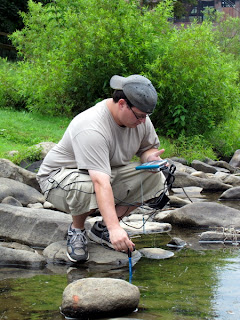We will soon be leaving for our week-long trip across the state to locations of importance to the timber and rail industries. There are couple of points that I need to remind you about:
· Several of the manufacturing sites we will visit require long pants and closed toe shoes. Please don’t forget to pack these items.
· Some sites require protective eyewear (safety glasses) and hearing protection (ear plugs). These will be provided for you. If you have the hardhat from last summer, please bring it with you. If you were not part of last summer’s trip, a loaner hardhat can be provided for you if needed.
· If the past three weeks are any indication, we can expect hot weather for our trip. You may want to bring a water bottle and cool clothing for the days that we are not in a plant requiring long pants.
· There is a list of things to bring in the “Expectations” document that you were given at our first class meeting last winter. Here are some things that you will want to make sure to not forget:
§ Samsung Galaxy Tab Computer
§ Vernier LabQuest Pro & water quality probes
§ Tree identification books
§ Tape Measure
§ Shorts and long pants
§ Sweatshirts, Columbia type shirts, changes of socks, hat or cap
§ Hiking shoes/boots for walking on trails and visiting manufacturing plants
§ Light rain jacket (Frog Toggs or Dry Ducks are great)
§ Windbreaker
§ Sunglasses
§ Hardhat
§ Refillable water bottle
§ Insect spray, sunscreen
§ Toiletries and medications
§ Phone card if you wish to call home
§ Cash for incidental meals and snacks or souvenirs
§ Chargers and connection cables for electronics
· As in prior years, some of the places we will visit are in remote locations. Suitable bathroom facilities may be scarce. Please (as much as possible under the circumstances) be patient.
· Please remember that there are four requirements you need to complete before I can process your stipend for the summer project:
1. Local tree guide (including photos and descriptions of at least 12 tree species) that your students can use. This may be best done on a tab of your blog although you may have other ways as well.
2. Narrative and photos on the determination of board feet from a standing tree
3. Assessment of water quality on 4 Pole Creek including data tables
4. Three professional quality lesson plans using the provided lesson plan format or another comparable layout. Lesson plans should be in Microsoft Word format and sent to Steve via email. They should also be provided on a link from your blog page and available to visitors to your blog. You may find that it is convenient to upload your lesson plans to Dropbox, SugarSync, Amazon Cloud Storage, Box.net, or ShareSend.
Please take time to review the itinerary in our shared Dropbox space. Especially note that we are meeting in the parking lot of the Cabell County Central Office at 8:30 am on Sunday, July 15. We will depart promptly as scheduled.
I can’t wait to get started on our culminating experience from the Forestry and Rail Transport project. Seeing many of the things that we have discussed in class will give you the tools to make your lessons come to life for your students.


















